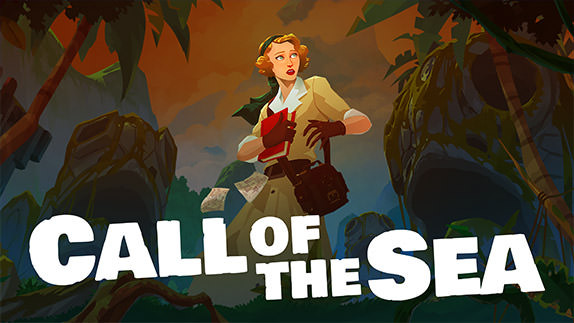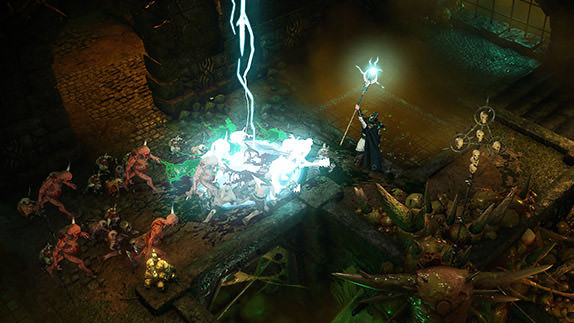Destiny 2 Review

 By Kevin Mitchell | September 14, 2017
By Kevin Mitchell | September 14, 2017
An emotional tale of redemption, Destiny 2 pits the Guardians against a superior Cabal faction known as The Red Legion. Never tasting defeat, they are led by the menacing being known as Lord Ghaul, who believes he is the one true person worthy of The Traveler's light. Even though he has razed hundreds of worlds to prove his mettle, he breaks the connection between the giant sphere above The Last City on Earth and its protectors, stripping them of their power. Without light, Ghosts can no longer resurrect their Guardians, making them easy targets for Ghaul's unstoppable war machines.
Humanity is battling for their survival, and it's here where we find new friends and heroes in the fight to reclaim our home. Bungie took criticism to heart regarding the complete lack of narrative in Destiny, trying to salvage what they could with the final two expansions, and they have come out swinging in Destiny 2. Never before have I felt so much emotion in a cooperative online shooter. Rising from the ashes, you find your Guardian powerless, limping for survival as enemy patrols ravage throughout the city. Barely able to stand, you slowly make it to a secret valley where a piece of humanity that didn't believe in the strict rules of the Last City calls home. For a game series that makes you feel like a galactic badass capable of slaughtering dozens of enemies with a single attack, it was quite humbling to fear for one's life over the course of the first few story missions.
In Destiny 2, almost everything in the game can be selected from the expansive map locations on each of the four destinations: European Dead Zone, Titan, Nessus, and Io. This helps the game feel more cohesive and connected, as it treats players' time with much more respect than the first game ever did. Having to warp back to orbit after every mission or if you decided to spend your time patrolling zones in the first game took way too long. Here, story missions, patrol quests, public events, and all manner of collectibles share the same environments. You can seamlessly transition from an ongoing public event to searching a nearby Lost Sector, completing a self-contained story mission known as an Adventure, or delving deep underground to loot an enemy dungeon in a Lost Sector.
The major locations in Destiny 2 are ripe with things to complete and collect. Just like in Destiny, there are a certain number of regional golden chests, but this time they appear on the Director, serving as an overhead map of the region. The same can be said about the Lost Sectors, which point players to their relative locations, but you still must find the secret entrance. Once inside, you'll face overwhelming forces, with a major foe serving as the location's guardian. The rewards for completing these mini-dungeons are satisfying and help provide players with additional methods of gathering redeemable materials and loot.
Public events are finally a proper gathering point for players, and after a hundred hours in the game, almost all of those that I have completed had at least two other Guardians working alongside me. As the events are marked on the map, you no longer have to aimlessly fly around hoping to find one or rely on third-party websites that may or may not be accurate. All of the different events have a unique heroic version that can be unlocked when set conditions are met. Many of these focus on something outside of the main objective, but even after only a week of playing, most players are well-aware of how to activate heroic encounters. The difficulty spikes and the purpose alters, but the risk is well worth the possible reward bonuses. I've received more legendary and even exotic engrams from public events than I ever did in the thousands of hours I spent in Destiny and all of its expansions. Once unlocked, patrols serve merely as a way to gain clan experience and redeemable materials. They consist of the same tasks: kill "x" amount of enemies, collect drops from a particular enemy type, or visit different locales for scanning.
Adventures serve as self-contained side quests, found scattered throughout the four locations in Destiny 2. They become unlocked as you progress through the story, but you can complete them at any time. Each has a recommended power level for you to judge the difficulty and a unique reward. Some give out rare engrams (blues), while others provide an additional upgrade point to spend on your subclasses. Just like in any great role-playing game, these provide richer lore into the universe, and some are even more enjoyable than the actual story missions in both design and structure. Once you finish the 10-hour main story quests, you'll begin to unlock end-game quests from the single non-playable characters in each location. These are quite tough to finish alone, so I would recommend tackling them with a friend, especially considering you'll earn exotic rewards for their completion.
While Destiny tasked players with scouring the planets for minerals, each serving a different purpose, Destiny 2 simplifies the process and converts everything into faction reputation. Opening chests, completing patrols, public events—everything you do gives you the chance to earn redeemable faction tokens. Once you level up with a faction, you'll receive a legendary engram, consisting of new weapons, armor, shaders, consumables, and more. The shader system has been completely revamped in Destiny 2. Instead of altering the colors for the entire set of gear you have equipped, they are now single-use consumables. They can be applied not only to armor but can be used on legendary weapons, ships, or vehicles. Each location in the game yields different shaders as faction rewards, but if you're lucky, you'll earn rare shaders from chests and public events.
The Eververse Trading Company has returned as the paid-currency vendor, allowing players to purchase loot boxes with Silver, the currency that you buy from the PlayStation Store or Xbox Store. These Bright engrams give you multiple items, including new emotes, shaders, armor sets, ships, ornaments (skins for exotic weapons), and more. Bright dust can be spent on specific items that change weekly, but earning the currency is quite tricky. It's true, you can get it from opening Bright engrams, but it's also earned by dismantling ships and vehicles. Items tend to cost quite a bit, but if you really must have exotic emotes and don't want to spend more money on new engrams, this is your best bet. Every time you level a character after hitting the current cap of 20, you'll receive a Bright engram, ensuring you will have a constant flow without ever having to spend money in-game.
Gone are the days of painfully leveling up individual weapons and armor to unlock perks. Instead, once acquired, you are given a set amount of perks, letting you pick from different scopes, magazine sizes on weapons, and stat bonuses on armor pieces, such as improved mobility or resistance. Mods can further customize your weapons and armor but cost a single-use consumable. Depending on your playstyle, you may want to add one that boosts the recharge rate of your super ability or maybe the reload speed of a power weapon. As a consumable, if you do end up dismantling the item, you won't receive the mod back.
Bungie has gone ahead and revamped The Crucible, Destiny's competitive multiplayer, limiting it to only 4v4 but adding new modes and maps. Currently, there are two different playlists: Quick Play and Competitive. Both feature various game modes, none of which can be directly selected. Competitive limits or, in some modes, entirely removes the ability to respawn, changing the tactics that you must use to win the match. Quick Play will be quite familiar for those that played Destiny previously, featuring match types such as Control and Clash (deathmatch). Matches are fast-paced and frantic as maps are tighter and feature multiple pathways. As a handful of fireteams has officially completed the Leviathan raid, a new map has opened up to all players, set in the same environment.
Destiny integrated Strikes—missions that focused on cooperative gameplay with a three-person fireteam that culminated against a massive boss—into the narrative, but in Destiny 2, they are an afterthought. Opening up after you finish the story, Strikes are still best played with friends but are still completable using matchmaking. The rewards are currently lacking, and there are only a handful in the game at this point. After running through each one, I haven't found a good reason to run through them besides completing any milestone tied to them. Nightfalls have been significantly altered, adding a unique timer mechanic to both the standard and new prestige difficulty. The new modifiers certainly keep players on their toes, but once again doesn't allow for proper matchmaking. Instead, Bungie is testing a guided games feature, letting clans help others run through the content they would otherwise not be able to complete. As it has just been recently released and only to a small portion of players, I haven't been able to test both sides of the feature properly.
Simply Put
Destiny 2 is an absolute marvel, outperforming its predecessor in every aspect. The strong cinematic narrative focus is both refreshing and much needed. Destiny 2 respects its fan base's time with the way content is structured in each location. The game's sweeping score is simply astonishing, ramping up during key moments but helping elevate the game's strong atmosphere even when just exploring the forests of the European Dead Zone or the oceanic surface of Titan. The game's first raid is both remarkable and uniquely designed, putting less focus on boss encounters and instead highlighting the strong gameplay mechanics and puzzles from the game's designers. Some may be turned off by the consumable nature of mods and shaders, but considering that by the time you finish the narrative and hit level 20, you'll be overflowing with more shaders than you'll ever use.
Note: Destiny 2 was reviewed on PlayStation 4. A digital copy of the game was provided by the publisher/developer.




